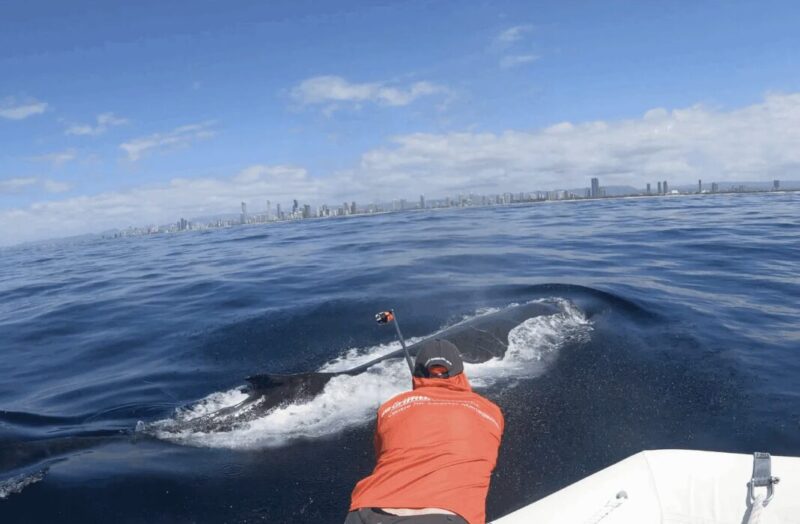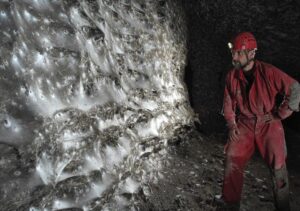When marine scientists put suction-cup cameras on humpback whales off Australia’s east coast, they were trying to observe their behavior and migration patterns. At the same time, they unwittingly filmed the journey of hitchhiking remoras.
The rare footage shows the remoras clinging to the whales until mere moments before the whales breach. Then, at the last minute, they quickly detach. What surprised the team most was the remoras’ ability to stick with their whale host during rapid ascents and reattach with astonishing precision and speed as the whales crashed back into the water.
“Whenever the whale was breaching and doing in particular fast movements…the sucker fish were responding very quickly,” said Olaf Meynecke of the Whales and Climate Research Program at Griffith University in Australia. “They knew exactly when to let go of the body of the whale before it breached the surface of the water and then returned to the same spot only seconds later.”
The little hitchhikers are harmless to the huge whales. The videos demonstrate the mutual benefits of this unusual partnership. The remoras graze on dead whale skin and any sea lice the whale has. In return, they get a free ride and as much food as they could want.
“They have their entire meal, and they all have their mates with them as well,” Meynecke explained. “So they are mating and reproducing on the whale’s body. It’s like the perfect vehicle for them.”
Research found that whales that appeared to be shedding more skin carried more remoras, often 15-20 fish per whale. In some cases, as many as 50 remoras had suctioned themselves onto a single marine mammal.

Attaching the cameras. Photo: Olaf Meynecke
They hitchhike on sharks, too
These sucker fish do not just attach themselves to whales but occasionally onto sharks, manta rays, turtles, dolphins, and even scuba divers. The relationship is often seen as benefiting both parties, although the whales often appear less than enthusiastic about their persistent passengers.
“We have observed whales eyeing them, undertaking multiple breaches, then checking again,” explained Meynecke.
He admits that several mysteries still surround the fish. It’s unclear whether remoras remain attached for the entire migration, all the way from Australia to Antarctica and back, or if they switch hosts along the way. There’s also the question of timing and reproduction: Remora larvae are born in the East Australian Current and must find a host soon after developing, hinting that the timing of their life cycle might be tied to the whale’s migration route.






